A roof fall protection system is required to eliminate the hazards associated with working at heights. The fall protection must be provided when working over dangerous equipment and machinery, regardless of the fall distance. Working at height adds unique challenges for construction crews and roofers, and there need to be safety systems in place that will help protect them should a fall occur. The rooftop work environment requires special safety measures for the workers. The selection of the right roof fall protection system products can mitigate the risk of mishaps and ensure safety. For roofs, there are three categories of fall protection used, namely Counterweight Fall Protection System, Permanent / Fixed Fall Protection Systems and Mobile Fall Protection Systems. Based on these three main categories there are different types of fall protection components available for roofers.

Different types of roof fall protection components
Single point anchor
Single point anchors are engineered to your building or structure’s requirements. Oftentimes, additional structural supports are necessary to resolve the loads into these structures or a permanent clamping method is necessary to avoid damaging the steel. The single point anchors are typically used when a worker needs to access a small area at heights. Depending on the height of the anchorage, length of retractable lifeline or lanyard, and fall distance, the single point anchor provides a cone of coverage area. Depending on environmental conditions, single point anchors are available in stainless steel, galvanized or coated finishes.
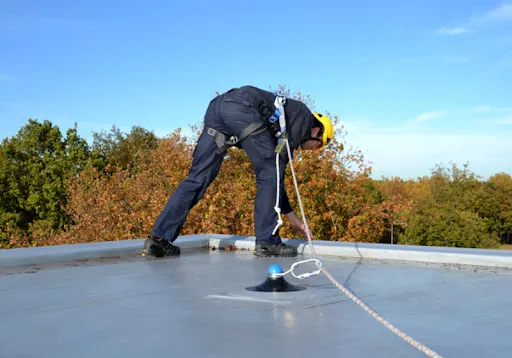
Rooftop guardrail
It is a modular system for multiple configurations and versatility on uniquely shaped installations. It is designed for safe egress/ingress through roof access hatches, and protection while the hatch is open. The rooftop guardrail systems that can be customized fit to meet all your needs. Another benefit to guardrails is that they can be installed without needing to attach to the roof, they are non-penetrating. These non-penetrating systems mean no holes in the roof membrane, ensuring no leaks over time.
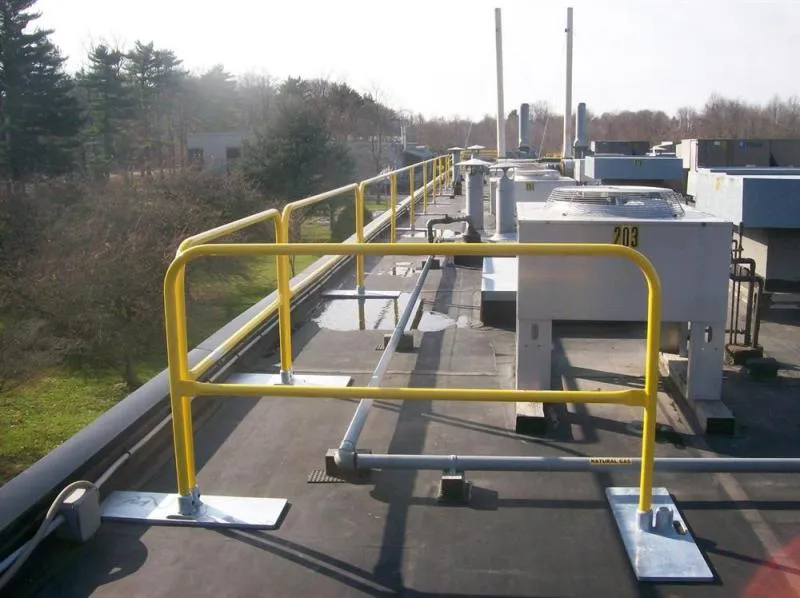
Parapet railings
Parapet railings can range from a few inches to a yard tall, depending upon the design of the building. The height of a parapet also varies depending on its intended purpose. The fitting is designed to attach to the top of the parapet. From there the railing hangs over the edge on the inside of the building. The railing is then constructed at an angle away from the roof edge. The angle gives the railing greater strength and preserves the aesthetics of the building by making the railing less visible from below. Parapet railing uprights are directly screwed to the rooftop parapet. Depending on the height of the parapet, uprights may have one or two rails.
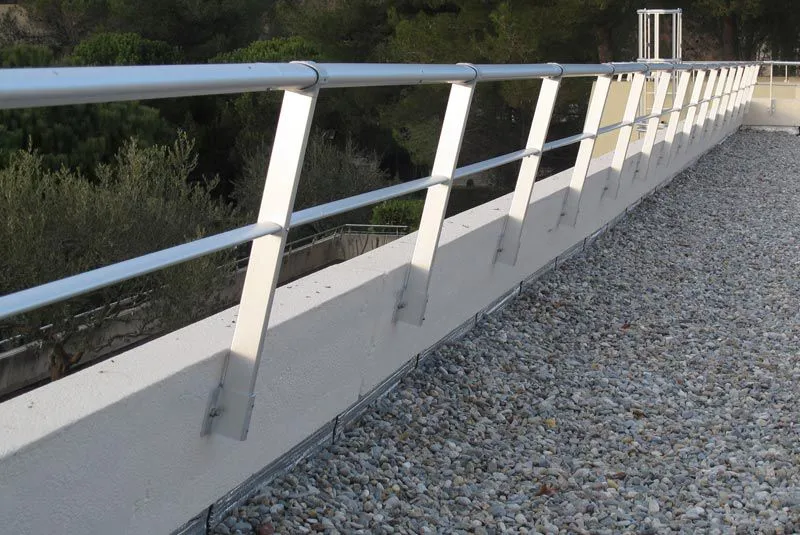
Rooftop Walkways & Crossovers
Rooftop Walkways & Crossovers utilizes modular components that allow you to design secure structures that are reliable, flexible and support your critical safety needs. It is used for ease of access between varying roof elevations, over tripping hazards, over openings and parapets. For slippery or unstable working surfaces, these platforms provide safe means of access, egress, and walking surfaces. These are designed to cater to standing seam roofs, metal profile roofs and membrane roofs with concrete or metal decks. These are available as assembled systems, which are easily lifted and placed on the roof surface, or assembled on-site.

Skylight screens
Skylight screen covers the skylight with a wire mesh to protect workers from accidental falls and lacerations. It is available in a variety of sizes, shapes, and materials to fit almost any roof opening and smoke vent. Skylight screens or cages cover the skylight with a wire mesh to protect them from accidental falls and lacerations. These are available in a variety of sizes, shapes, and material to fit almost any roof opening as defined by OSHA, including smoke vents. Optional galvanized or stainless steel screens are durable and weather-resistant for every installation type, including curb style skylight installations, standing seam metal roof skylights, and for rib/corrugated metal roof skylights.
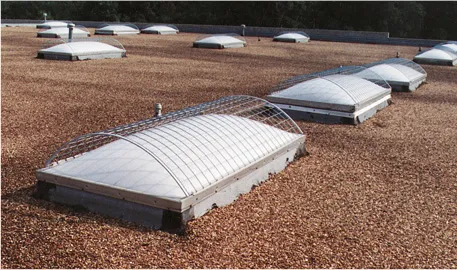
Roof Hatch
Roof hatch safety railing system provides a permanent means of fall protection for roof hatch openings. These offer perimeter protection to prevent falls and provides a place for the worker exiting and entering the hatch to grab onto. It is strong and easy to install with Aluminium rail construction and a non-penetrating attachment. It can be installed quickly and easily to new or existing Roof Hatches and Smoke Vents with cap flashing.
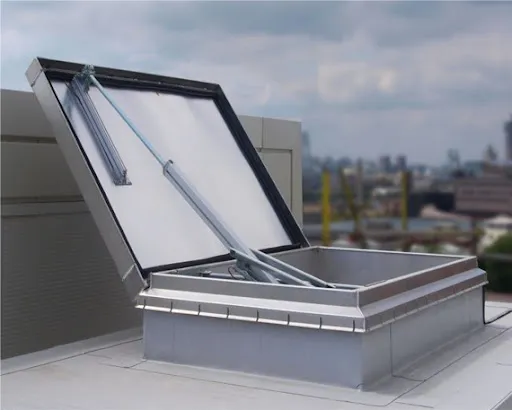
Roof walk
Roof walk provides a safe walking surface that protects the rooftop and any workers who require roof access. The walkway evenly disperses the load generated from foot traffic across the roof surface. It also provides a clearly marked path further protecting the roof from avoidable damage. It allows for access to rooftop equipment and fixtures while helping to evenly distribute weight loads and, in most cases, without roof penetration. This permits workers to walk safely on an anti-skid surface that has no seam distortion and does not place excessive stress on the roof.
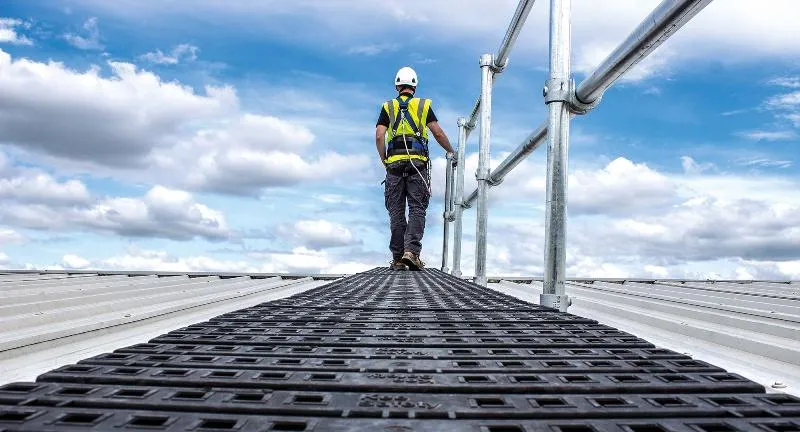
Horizontal lifelines
Lifeline Systems are versatile, economical solutions that equip rooftop workers with continuous, active fall protection. A single horizontal lifeline allows up to three workers to perform their tasks with complete fall protection. Because workers are continually attached to the safety line, Horizontal Lifelines make it possible for workers to safely access all areas of a rooftop. The horizontal lifeline consists of a cable attached to two or more anchor points on a roof-top. It can be positioned at the base of the structure, overhead or somewhere in-between these points. A horizontal lifeline can arrest a fall, limiting the amount of force that is transferred both to the worker and the fall arrest system. This same combination of horizontal lifeline, body harness, and lanyard can also serve as a fall restraint system.
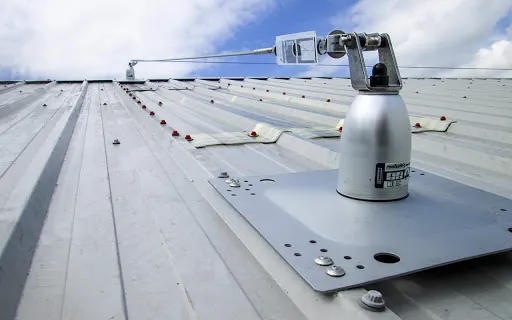
Vertical lifelines
Vertical Lifeline allows up and down movement of workers by eliminating the need to find new tie-off points while ascending or descending from a tower or ladder. By connecting to the vertical lifeline using a shuttle or traveler, workers may move as long as tension is slack on the lifeline. In the event of a fall, the shuttle automatically engages the vertical lifeline and locks it, avoiding mishaps. A vertical lifeline enables mobility up and down the entire height of the line, eliminating the need to disconnect and find a new tie-off point along the way. These systems are usually a rope, a cable, or a track to which a worker is attached via a full body harness and lanyard. A variety of system designs are available to best fit specific tasks and job sites. These include flexible cable ladder safety systems and synthetic rope with safety rope grab systems.
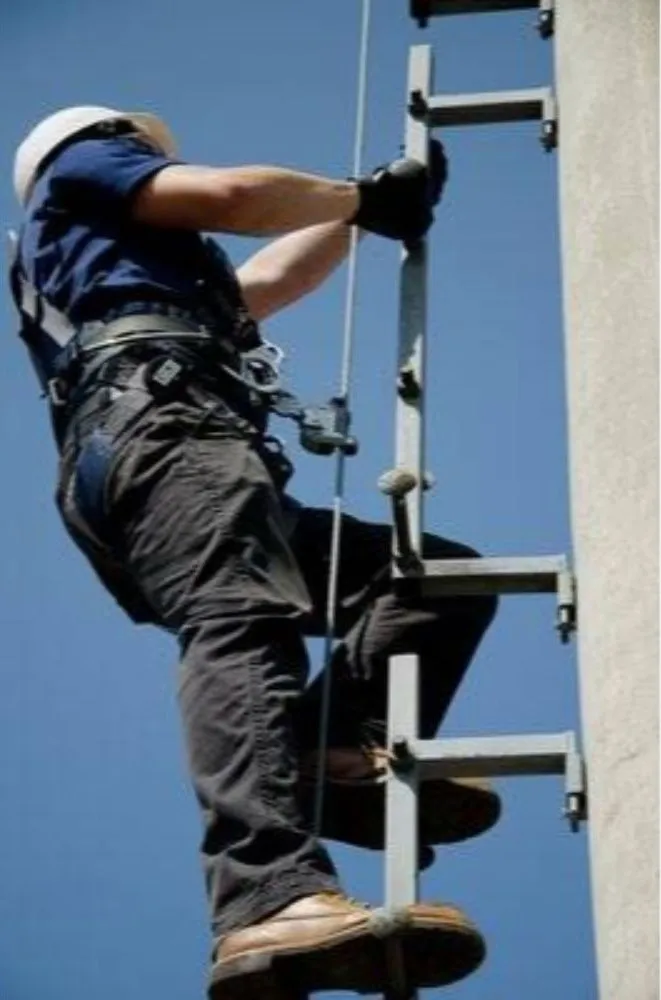
Warning lines
Warning line systems consist of ropes, wires, or chains which are supported by stanchions that are designed to withstand being tipped from the walking or working surface. The work area must be surrounded by the warning line and must be at least six feet from all sides. The warning line must be marked at least every 6 feet with high-visibility material and remain between 34”-39” from walking or working spaces. The individual sections of the warning line must be independent of each other.
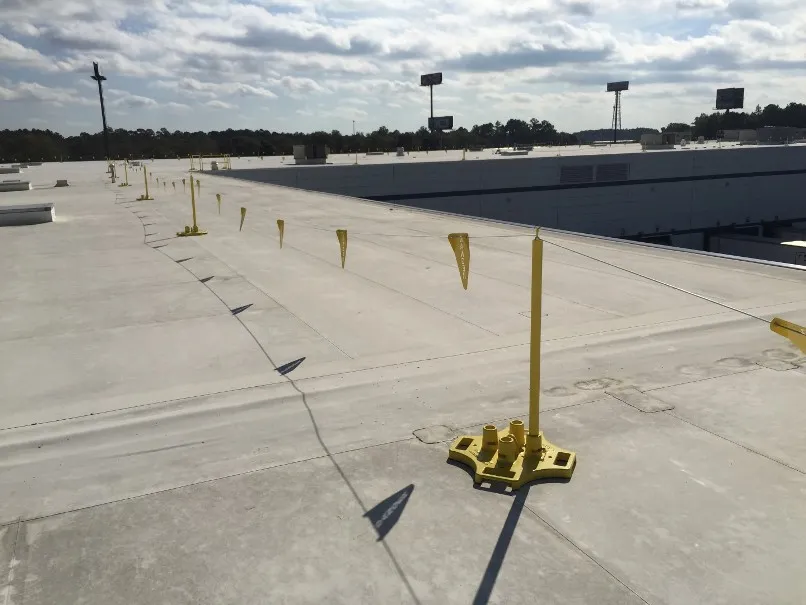
Conclusion
Choosing a fall protection system depends on your environment and the requirement of the work being undertaken. It is the responsibility of the employer to ensure the appropriate measures are in place to prevent mishaps of the workers. Being aware of safety precautions and selection of the right equipment is therefore pivotal. Make sure the fall protection system is suitable for your work environment.

